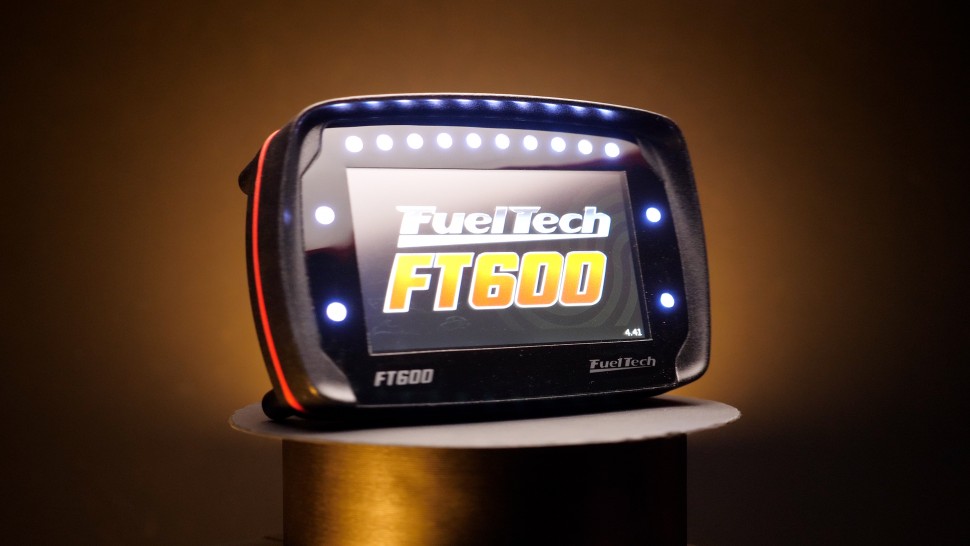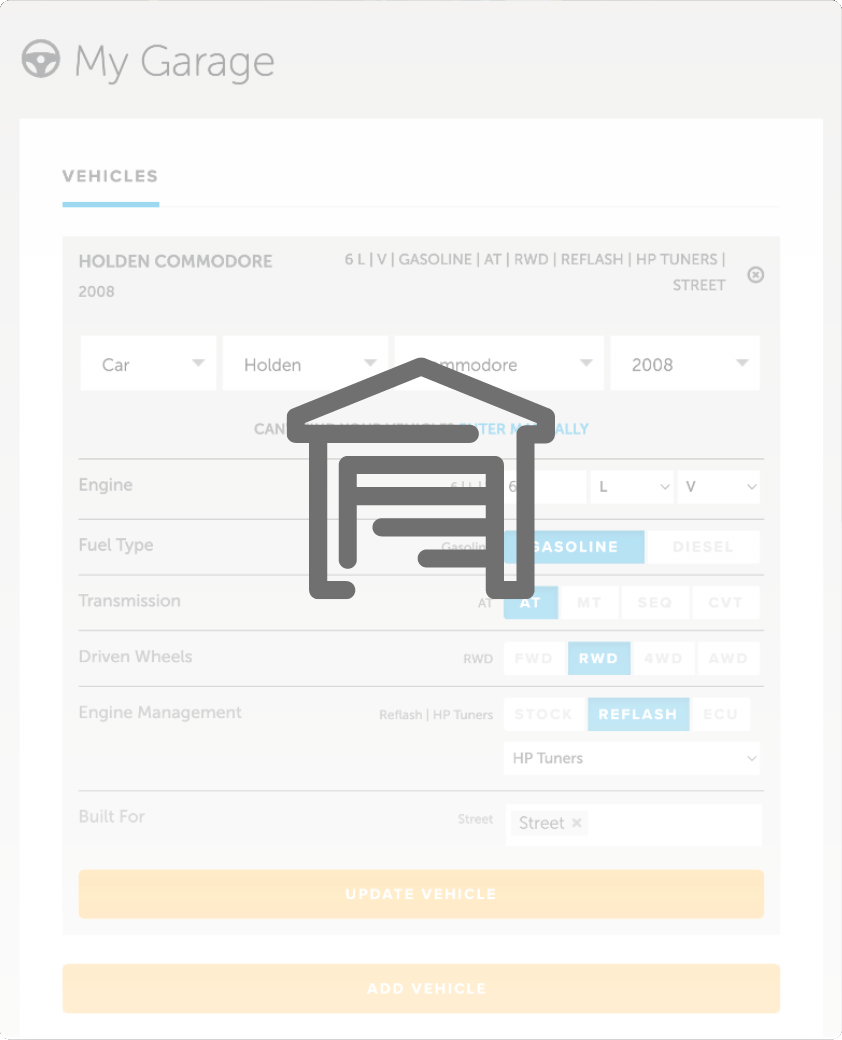| 00:00 |
As tuning technology has advanced, we've seen the proliferation of user -selectable drive modes.
|
| 00:05 |
In some cases, a vehicle may just have two, perhaps a normal mode and a sport mode, though it's increasingly common to see a third eco mode.
|
| 00:16 |
Some vehicles have a mode for snow or ice, while trucks sometimes have tow-haul modes, and select vehicles have low-speed off-road modes or modes for high-speed off -road or Baja-style driving.
|
| 00:28 |
In many cases, drive modes impact both engine and transmission tuning.
|
| 00:33 |
On those vehicles, the calibrations should provide a unified experience.
|
| 00:39 |
Alternatively, some vehicles use drive modes for ECU changes only, or TCM changes only.
|
| 00:47 |
If we're working with a vehicle that doesn't have drive mode capability, it's something you can actually create via separate ECU and TCM calibrations for different driving situations.
|
| 00:58 |
While not as convenient as pushing a button to achieve changes in real time, loading up different ECU and TCM tunes before driving is an option.
|
| 01:08 |
Whether you change behaviors with drive modes or separate calibrations, here's how the changes in behavior are commonly implemented.
|
| 01:17 |
Drive modes capable of impacting engine operation are mostly found on drive-by -wire vehicles, where the relationship between accelerator pedal position and requested torque or throttle angle can be varied.
|
| 01:32 |
On a cable throttle vehicle, the driver's foot has the whole say in that arrangement.
|
| 01:38 |
Another key area sometimes impacted by drive modes is traction control.
|
| 01:43 |
On some vehicles, traction control is made more or less intrusive per drive mode.
|
| 01:50 |
On the transmission side, typical drive mode adjustments are in shift scheduling, shift firmness, and torque converter clutch behavior.
|
| 01:59 |
Keep in mind, if you switch drive modes on a vehicle and the transmission behavior does not change, some vehicles will only alter ECU behavior, while some will alter TCM behavior, and some both.
|
| 02:15 |
Some higher-end or more sport-oriented vehicles can even go a step further and update active suspension or aero or open exhaust valves based on drive mode changes.
|
| 02:26 |
In sport or race mode, or I've even seen it called turbo mode on non-turbo vehicles, the ECU will generally request more torque or more throttle opening when the driver pushes the accelerator pedal partway down.
|
| 02:40 |
Because the engine responds with more torque for a given driver accelerator pedal input, the driver thinks, wow, this is more sporty, despite maximum engine output at full throttle often remaining the same.
|
| 02:55 |
The transmission tune is generally set to shift more firmly in sport or race modes by increasing line and or clutch pressure.
|
| 03:05 |
Sometimes this is paired with quicker shift times, but often not.
|
| 03:09 |
Upshift points at partial throttle are usually increased to higher vehicle and engine speeds.
|
| 03:16 |
Downshifts are similarly set to keep the engine at a higher speed, staying in lower gears.
|
| 03:23 |
The reason for those shift point changes is by keeping the transmission in lower gears for a given vehicle speed, the engine stays at higher RPM.
|
| 03:32 |
This gives a more sporty feel since the engine is generally more responsive and has greater horsepower potential at higher engine speed.
|
| 03:41 |
In addition to the mechanical advantage, the shorter gearing offers.
|
| 03:46 |
The torque converter clutch is often left unlocked under a broader range of conditions, allowing the engine to rev up more freely, again to improve both the real and perceived sportiness of the vehicle.
|
| 03:59 |
If a vehicle has a sport mode and a race mode or various levels of sport or race modes, they're often just more or less aggressive versions of the same sort of changes.
|
| 04:10 |
As the mode gets more sporty, the engine is generally kept at even higher speeds, again facilitated by gear selection and lock-up clutch changes.
|
| 04:22 |
An eco mode is often the opposite of sport and race modes.
|
| 04:26 |
In eco mode, the ECU tends to be set up for less requested torque or throttle opening at partial pedal positions, and in some cases, output while flooring it is also reduced.
|
| 04:40 |
This allows the driver to press the accelerator pedal down as far as they usually do in normal mode, but get less engine output so they use less fuel.
|
| 04:50 |
By softening up engine response to throttle transitions, acceleration enrichment on port-injected engines can also be reduced in eco mode.
|
| 05:00 |
While better fuel economy could be achieved in normal mode or without drive modes at all, if the driver simply applied less pedal input and moved the accelerator pedal more smoothly, many drivers seem to appreciate the help.
|
| 05:16 |
In the transmission tune, eco modes tend to use higher gears to keep engine speed low.
|
| 05:22 |
This reduces frictional losses and keeps the engine in a range where it can provide best fuel efficiency.
|
| 05:30 |
The torque converter clutch will be locked as much as possible during steady state cruising or gentle acceleration in eco modes.
|
| 05:39 |
This keeps all engine torque passing through the transmission.
|
| 05:44 |
While coasting, the converter clutch may be left unlocked more in eco mode.
|
| 05:49 |
This allows engine speed to drop in relation to vehicle speed, reducing engine braking, and improving fuel economy.
|
| 05:58 |
Snow and ice modes, much like eco mode, usually make engine and response less sensitive, but the main goal is improving driver control in tricky situations.
|
| 06:09 |
ECU side changes make accelerator pedal inputs cause very tame engine output, so the driver is assisted as they carefully nurse the vehicle through low traction conditions.
|
| 06:21 |
On the transmission side, shifts may be extended and softened by more gradually ramping pressure down on off-going gear components and bringing pressure up on ongoing components more slowly as well.
|
| 06:33 |
This helps sudden changes in axle torque, which could cause tires to break traction when little is available on a slippery surface.
|
| 06:42 |
The torque converter clutch will generally be left unlocked under most or all conditions in these modes to allow the torque converter to damp sudden changes rather than directly coupling the engine and drivetrain.
|
| 06:56 |
Snow and ice modes are generally safety oriented rather than performance oriented.
|
| 07:01 |
Next, we have tow or haul modes, which are more prominent on trucks.
|
| 07:06 |
The ECU side changes made in these modes aren't as universal as the others, and in some cases, only the transmission behavior changes.
|
| 07:14 |
On the transmission side, a key aspect is assisting the vehicle braking system with more aggressive downshifting during braking to increase the engine braking effect.
|
| 07:24 |
Downshifting may also be more aggressive when coasting to reduce potentially unwanted acceleration that the heavier load would cause, especially while going downhill.
|
| 07:36 |
Torque converter lock-up clutch changes are also common in tow-haul modes.
|
| 07:41 |
This is because the extra load on the vehicle can cause the torque converter to slip more than usual, resulting in heat rapidly building up.
|
| 07:49 |
By keeping the torque converter locked in more situations, the heating of the transmission fluid and components can be reduced.
|
| 07:58 |
That said, getting a heavy load moving from a stop or low speed requires a great deal of torque.
|
| 08:04 |
Keeping the torque converter unlocked allows maximum torque multiplication as the vehicle gets the load moving.
|
| 08:12 |
This is still worth the extra heat generated, and you can cool things back down by locking the converter back up after the vehicle gets moving.
|
| 08:22 |
Another change in tow-haul modes is firmer shifting.
|
| 08:26 |
A heavier load can cause increased wear and heat on clutch and holding components, so completing shifts more quickly to reduce slippage helps.
|
| 08:37 |
The shorter transition and potentially higher pressure involved can make this feel more abrupt.
|
| 08:44 |
The torque converter clutch is often unlocked during the shift to offset some of the harshness, and then re-engaged after it's complete.
|
| 08:52 |
On the ECU side, torque management of shifts may also be tweaked in tow-haul modes, but again, the ECU side of this mode is not as consistently implemented across the industry.
|
| 09:03 |
If this is something you want to adjust, remember to look for potential shift torque management settings in both the ECU and TCM tunes.
|
| 09:14 |
Low speed off-road modes for rock crawling, hill descent, sandy beaches, and mall crawling tend to make ECU side changes similar to snow and ice mode.
|
| 09:25 |
That means toned down and smooth engine torque and throttle ramping as the driver pushes the accelerator pedal down.
|
| 09:33 |
Unlike snow and ice mode though, transmission settings tend to keep the engine speed up quite high for heightened engine responsiveness and maximum engine braking to slow descents without having to rely so much on the brakes.
|
| 09:48 |
Next, we have high speed off-road or Baja style modes, which can be quite similar to sport or race modes.
|
| 09:55 |
As we touched on earlier, sometimes they implement active suspension changes as well, but transmission tuning for off-road racing vs on-road racing is relatively similar aside from torque converter clutch lock-up behavior.
|
| 10:09 |
When racing through the desert or off-road in general, the drivetrain and engine can both benefit from indirect coupling vs being locked together as traction is rapidly gained and lost during high engine output through whoops, jumps, and surface grip changes.
|
| 10:26 |
In a purpose-built off-road race truck, manual valve bodies are often fitted, so shifting is manual, and the converter has no lock-up clutch.
|
| 10:36 |
As OEMs attempt to approximate that behavior, they often unlock the converter until the transmission starts getting too hot, and then TCM logic starts locking the converter in some or more conditions to try to cool things back down.
|
| 10:52 |
Now, that I've given the gist of typical drive mode implementations, which ones might we want to adjust, and in what way? My first suggestion is always to try all of them before making any changes.
|
| 11:06 |
Take note of what you like and don't like about each mode.
|
| 11:09 |
Even if a mode is a tow mode or a snow mode and you're not towing and it's a clear sunny day, try them all.
|
| 11:16 |
Maybe you'll love driving your truck in tow mode even when you're not towing, because it just feels right.
|
| 11:22 |
Maybe you don't like sport mode for daily driving your car because you have a modified exhaust system and the shift schedule keeps engine RPM up high enough that it's too loud to have a conversation, but you love the way the shifts feel in sport mode.
|
| 11:37 |
Once we figure out what we like and don't like and under what specific conditions, we're ready to start reviewing the stock TCM settings in the various drive modes to see how each behavior change is being achieved.
|
| 11:52 |
I'll get into it more in the upcoming tuning process section of the course, but if we love the shift scheduling and throttle response of sport mode, but we don't want the unnecessarily aggressive shift feel, we can usually copy and paste normal shift firmness related settings into sport mode and make it even better.
|
| 12:11 |
We do need to keep in mind the drive mode changes often have impacts on both the ECU tune and the TCM tune, so as we consider mixing and matching, we do need to think about how the behaviors would layer on top of each other.
|
| 12:26 |
For example, maybe we don't really want super aggressive throttle mapping along with the TCM clutch almost always being locked up because it would make the vehicle too jerky.
|
| 12:38 |
Drive mode tuning doesn't have to be restricted to mixing and matching what's already there, so in some cases we may want to take a change specific to a drive mode, adjust the values a bit further in that direction, and see if we like it even more.
|
| 12:54 |
Also, while the modes typically have specific names like eco, normal, and sport, if our vehicle doesn't have a mode for a situation we want to cater to, we can repurpose an existing mode.
|
| 13:06 |
With a little creativity, you can create a new feature that didn't even exist.
|
| 13:11 |
For example, let's say we live in the desert.
|
| 13:14 |
We're never going to drive in snow, and our car has a snow mode.
|
| 13:18 |
Rather than it being pointless, make it into something useful.
|
| 13:22 |
Maybe we use the car for drifting, drag racing, or rally.
|
| 13:26 |
We can set snow mode up for one of those instead.
|
| 13:30 |
Hopefully all that flexibility has you eager to dive in, but first let's recap the main points we've covered in this module.
|
| 13:37 |
Drive modes may impact transmission operation, engine operation, perhaps active suspension, and more.
|
| 13:45 |
Any transmission side changes should be done with respect to ECU settings in each drive mode.
|
| 13:52 |
Drive modes have unique goals and behaviors which may or may not suit your particular needs and preferences.
|
| 13:59 |
Just because a mode is labeled snow doesn't mean you can't try it on a clear day.
|
| 14:05 |
Drive and log the vehicle in different modes.
|
| 14:07 |
See how the behavior changes.
|
| 14:09 |
Note what you like and don't like, as well as which conditions you'd like to make changes.
|
| 14:14 |
Through small adjustments or copy pasting the best groups of data to suit your needs, you can create a custom tailored experience even better than the originals.
|
| 14:25 |
We have one final module before we start the tuning process, and that's our final preparation for tuning coming up next.
|





